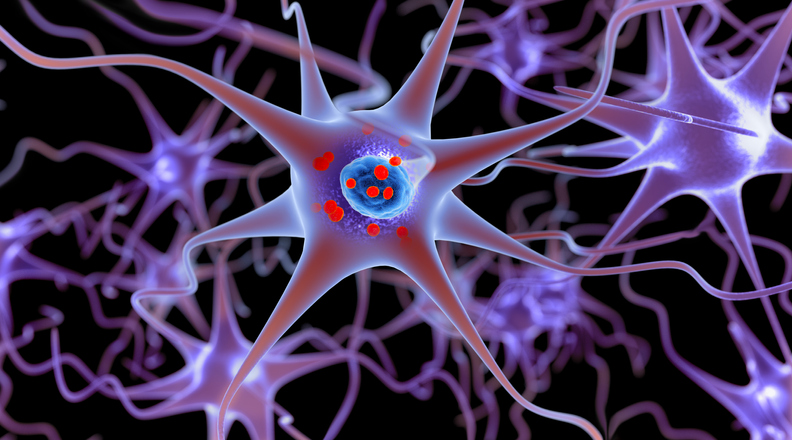When the actor Robin Williams died in 2014, he was suffering from undiagnosed Lewy body dementia, according to his wife. Lewy body dementia is the second most common form of dementia behind Alzheimer’s disease. It often exhibits Parkinson’s disease-like characteristics, which is what Williams was diagnosed with shortly before his death.
Here’s what you should know about this common form of dementia.
Lewy Body Dementia: What Happens?
According to the Lewy Body Dementia Association, approximately 1.4 million Americans have Lewy body dementia, but the condition is often underdiagnosed because its symptoms closely resemble Parkinson’s disease and Alzheimer’s.
Lewy body dementia is a progressive form of dementia where Lewy bodies — abnormal deposits of a protein — accumulate in the areas of the brain that regulate cognition, behavior and movement.
There is no cause for Lewy body dementia, but the greatest risk factor is increasing age. Lewy body dementia does not appear to have a genetic component, and having a family member who had the disease may or may not increase your risk. Your risk is increased if you also have Parkinson’s disease or a REM sleep behavior disorder.
Because it affects several areas of the brain, Lewy body dementia can present with a wide variety of symptoms, including:
- A severe loss of thinking abilities that interferes with daily life
- Unpredictable changes in concentration, attention and alertness
- Visual hallucinations
- Muscle rigidity and stiffness
- Tremor or shaking at rest
- Difficulty swallowing
- Smaller handwriting than usual
- Depression
- Anxiety
- Apathy
- Changes in body temperature
- Dizziness
- Frequent falling
3 Common Presentations of Lewy Body Dementia
According to the Lewy Body Dementia Association, the condition presents in three distinct ways:
Movement: This type of dementia happens when someone is diagnosed with a movement disorder first, then develops cognitive changes a year or more following their initial diagnosis.
Cognitive: This type of Lewy body dementia occurs when someone develops Alzheimer’s disease-like symptoms followed by movement disorder within a year of the onset of cognitive symptoms.
Psychiatric: There is a small group of people who will present with psychiatric symptoms before cognitive impairment or movement difficulties begin. These symptoms could include hallucinations, behavioral difficulties or difficulty with complex mental activities.
Treatment for Lewy Body Dementia
Though there is no cure, treatments are available to alleviate some of the symptoms of Lewy body dementia. If you or someone you know is diagnosed with Lewy body dementia, you’ll have a care team that will likely include:
- Physical and speech therapists to help with movement and speech difficulties
- Occupational therapists
- Mental health counselors
- Palliative care specialists
If you’re concerned about your risk for Lewy body dementia, speak with your doctor.











